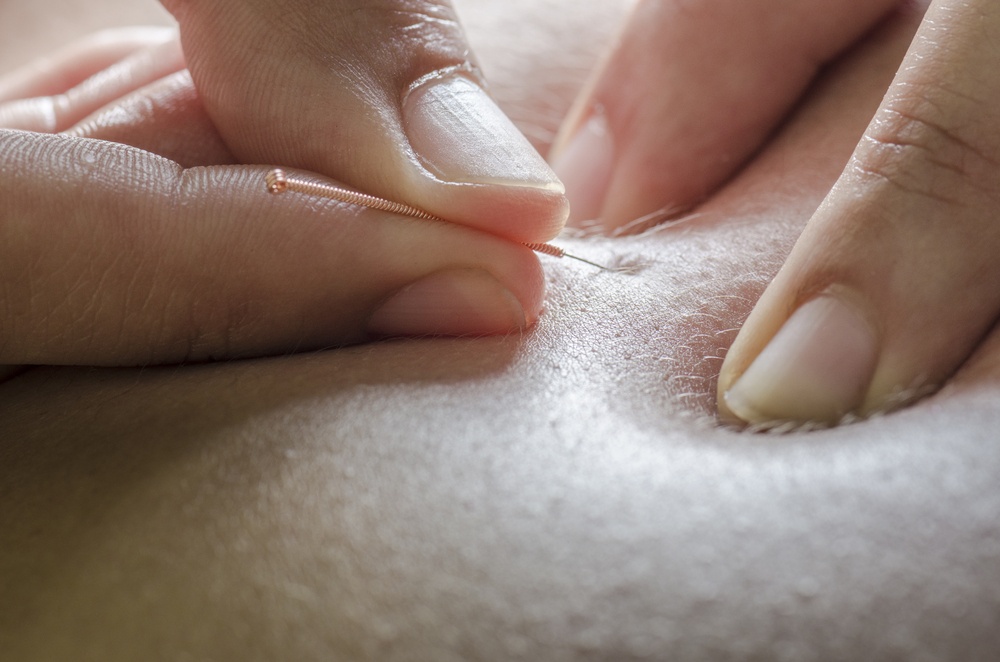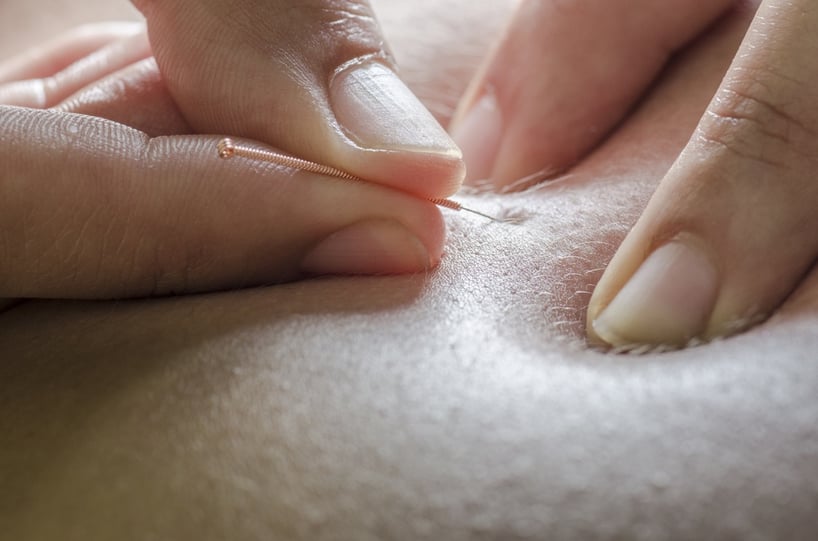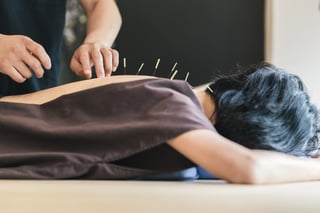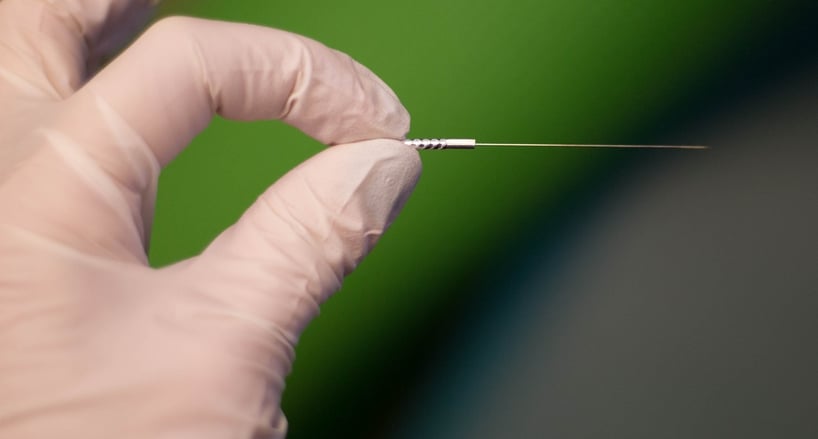What is Dry Needling Therapy? (Reasons and Benefits)
April 20th, 2017 | 3 min. read


Dry needling therapy is a type of physical therapy developed by contemporary practitioners of Western medicine. Dry needling treats muscular pain with the insertion of very thin and fine (filoform) stainless steel needles into well-defined points within the affected muscle. This precise intramuscular stimulation can be very effective in promoting healing, relieving pain, and improving range of motion, all without the use of drugs or medication.
This type of therapy may be particularly attractive for patients who are sensitive to pain medication or for those whose pain levels have not improved even after multiple session of other physical therapy, rest, exercise, or surgery. Dry needling increasingly has been finding usage among patients with chronic conditions that have resulted in long-lasting pain.
Other names for dry needling therapy include:
- myofascial trigger point dry needling
- myofascial acupuncture
- tendinomuscular acupuncture
- sports acupuncture
How is dry needling different from acupuncture?
Dry needling therapy, although similar to the prehistoric Chinese practice of acupuncture, is quite different in its fundamentals. The underlying theory of both practices is where they diverge.
Acupuncture was developed in China as long as 8,000 years ago. The technique is based on the belief that life generates an invisible energy, called “chi,” that moves through a living body along specific pathways, known as “meridians.”
Acupuncturists believe slowed or interrupted flows of chi energy are the cause of various ailments, and that by using needles to target the intersections—or acupuncture points—of these chi meridians, chi will be released, energy flow restored, and pain and weakness cured.
Hundreds of acupuncture points have been identified over the thousands of years this therapy has been in use. Traditional practitioners claim acupuncture can successfully treat a wide range of ailments, going far beyond musculoskeletal issues.
Dry needling, in contrast, is based upon contemporary studies of modern Western anatomy, including of the skeletal, muscular, and nervous systems of the human body. Generally, dry needling is used only to treat and manage muscular pain.
Although dry needling does not acknowledge the existence of chi or meridians, the myriad nerves, motor points, and trigger points identified as targets of dry needling do correspond roughly to the classic map of acupuncture points used in traditional acupuncture.
How are dry needling therapy and acupuncture similar?
Despite their basic differences, both dry needling and acupuncture display many similarities.

- Both treatments use solid-core needles to pierce a patient’s skin and penetrate into the tissues beneath. (Dry needling therapists may choose to use hollow core, or hypodermic, needles, which are designed to deliver medication or other treatment inside of a body; however, studies have shown that solid filoform needles cause much less discomfort for the patient.)
- Both aim to “hit” specific three-dimensional points within the body with the tip of the needle.
- Neither technique depends on the use of medications or other drugs, not even topical or local anesthetics, to deliver its benefits.
Physiological effects of dry needling
From a purely medical perspective, whether in search of a concentration of chi or a neuromuscular/myofascial trigger point, the physiological effect of inserting a needle through a patient’s skin will have the same effect on the body’s immune system.
- The needle creates a minor tissue puncture injury.
- The injury causes inflammation at the site (characterized by redness, swelling, pain, and heat).
- The inflammation stimulates the body to increase amount of blood flowing to the injury site, which also automatically increases the oxygen supply, which in turn leads to more rapid healing.
When properly inserted in to the correct trigger point in the targeted muscle, the dry needle will trigger what is known as the local twitch response: the involuntary contraction of the band of taught muscle fibers within the muscle. Once this reflex has been triggered, the following additional physiological benefits can occur:
- Decrease in the amount of spontaneous electrical activity generated by the treated muscles
- Decrease of the length tension of the muscle fibers
- Increased blood flow and oxygenation
- Decrease in pain, triggered by a decrease in both SP (substance P) and CGRP (Calcitonin gene-related peptide)
- Hyperstimulation analgesia: the stimulation of both large myelinated fibers (i.e., Aβ-and Aδ-fibers), as well as C-fibers, achieved indirectly via the release of inflammatory mediators
Dry needling therapy in practice
Dry needling therapy has been used throughout the world for years. It is an accepted treatment in use by physical therapists in most US states, for the treatment of the following conditions and more:
- Acute and chronic injuries
- Headaches
- Neck and back pain
- Muscle spasms
- Sciatica
- Hip and knee pain
- Muscle strains
- Fibromyalgia
- Overuse injuries
As a tool for physical therapists, the use of dry needling allows for the precise targeting of deep tissues that cannot be reached by surface touch. By using the filoform needles to release or inactivate trigger points, therapists have a powerful tool to relieve pain and improve range of motion.
Dry needling may improve pain control, reduce muscle tension, and normalize dysfunctions of the motor end plates (the locations from which nerve impulses are sent to muscles)—all of which can speed a patient's return to active rehabilitation.
Whether dry needling therapy is viewed as an evolution of traditional Chinese medicine, or as a relatively new field developed by contemporary Western medical practice, this technique—whatever form or description it has taken through history—has been helping millions of people for thousands of years. It is a safe, tested, and medication-free option for the successful treatment of pain.
If you are interested in learning more about dry needling as a therapy option contact Coastal Orthopedics in Corpus Christi at (361) 994-1166.
Article written by: Rob Williams, MD
Dr. Williams has been practicing orthopedic surgery in Corpus Christi since 1998. After graduating from Texas Tech hereceived his medical degree from the University of Texas at San Antonio. At the prestigious Campbell Clinic located at the University of Tennessee, Dr. Williams completed not only an Orthopedic Surgery Residency, but an additional year of Fellowship Training in Spine Surgery. Dr. Williams is dedicated to creating an excellent patient experience in the office or in the surgery suite.
Topics:

